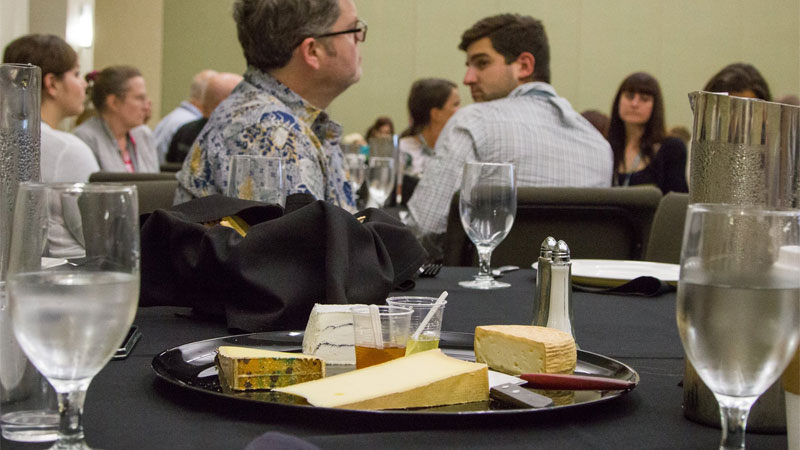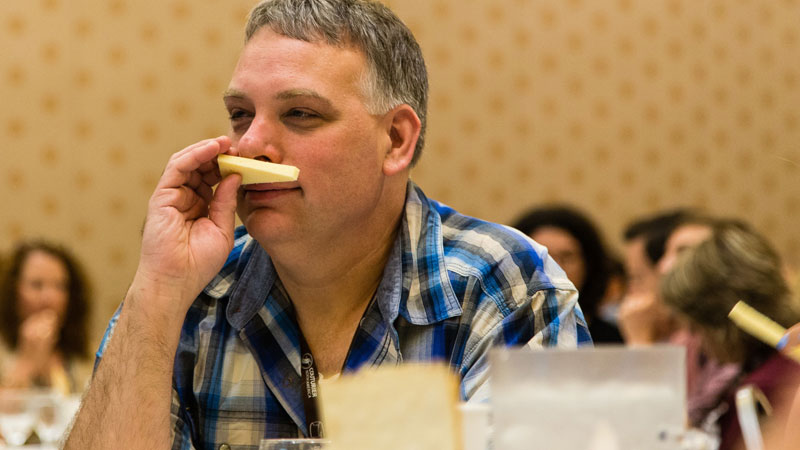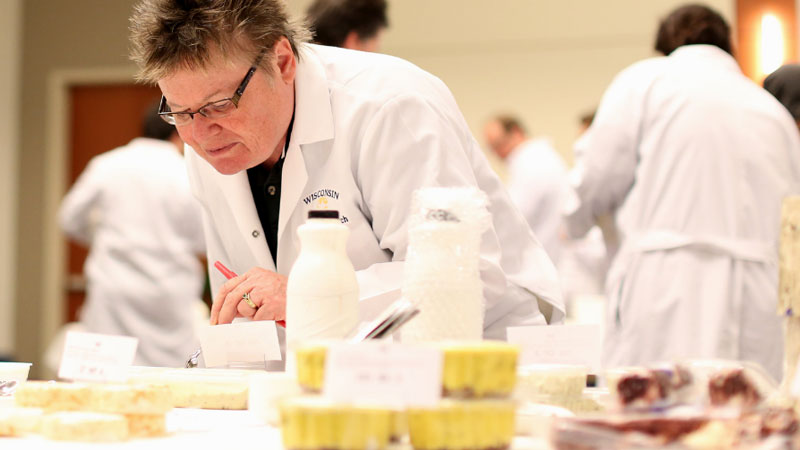In a 2019 Washington Post Magazine article, “The Sommeliers of Everything,” writer Jason Wilson tackles industry certifications to become a recognized expert in honey, chocolate, and cider. In hopes of gaining cheese certification, he sits for the American Cheese Society’s (ACS) Technical, Aesthetic, Sensory, Tasting Evaluation Test™ (T.A.S.T.E. Test).
“I immediately realize,” writes Wilson, “I am in way over my head.” He doesn’t pass, but shouldn’t feel bad about it: In 2018, only 30 applicants passed the T.A.S.T.E. Test.
If that weren’t daunting enough, the American Cheese Society also offers the title Certified Cheese Professional (CCP), which means “that an individual has acquired thorough knowledge and the level of expertise that is demanded within the cheese industry.” Those who pass both earn a lengthy array of letters after their names: ACS CCP™ ACS CCSE™.

The exams and their resulting alphabet soups of certifications are important because assessing cheese, much like classifying wines in Bordeaux, requires objectivity and an expansive knowledge base. Different people can have different opinions on how delicious a cheese is, of course, but evaluation needs to be critical in order to advance the cheese industry as a whole within the specialty foods market.
“Where a person’s individual palate is subjective, the process of evaluating cheese is not so much. It’s not personal preference but knowing if that cheese is within the parameters of the style it is and what the cheesemaker intended,” says Shari Allen, ACS CCP™ ACS CCSE™ and cheese educator, based in Utah.
And so the test is rigorous. One part of the exam entails identifying 10 vials of milk on scent alone. It’s “all about aroma,” explains Evan Brown, ACS CCP™ ACS CCSE™ and executive sales account manager at Gourmet Foods International in Boca Raton, Fla. While the exam is technically multiple choice, “there were 51 options on what each vial could be,” Brown says.
“This test is difficult to prepare for in the way I would normally study for a test: by cramming,” says Zoe Brickley, ACS CCP™ ACS CCSE™ and director of development and marketing at Jasper Hill in Greensboro, Vt. “The confidence to grade cheese as quickly as the test requires comes from years of tasting cheese of varying quality.”
What could be so difficult about a cheese test? Well, for one, says Brickley, “a grading sheet might have 60 possible descriptors and a cheese might only seem to need one or two to describe flaws or attributes. Others might register on over a dozen descriptor scales.”
And, to top it all off, “it was like a multiple-choice test with 60 choices for each question and each choice needing an intensity score between 1 and 5, and no guidance about how many right answers there could be,” Brickley adds.
Unlike the Master Sommelier exam or Wine & Spirits Education Trust certification, which entail practice tests and weeks of instruction, studying for the T.A.S.T.E. Test is “very self-directed,” says Molly Browne, ACS CCP™ ACS CCSE™ and central region sales manager at Vermont Creamery. Those who sign up for the test receive judging sheets and information, but the rest is up to the aspiring cheese professionals.

“I had a group of colleagues in Utah that met twice a week to evaluate cheese in all conditions, good to bad,” Allen explains. “We practiced blind aroma detection using the list of possible aromas for that part of the exam.” (Utah may just be the next hotbed of cheese talent, as it turns out — in 2019, nine of the 30 people who passed the T.A.S.T.E. Test were Utahns.)
For most who take the test, it was another way to prove and expand their knowledge. Turns out, “there’s a flaw with cheese eyes called ‘frog mouth’ where instead of nice round holes they are kind of figure 8-shaped,” according to Brickley. And “there is a disproportionate amount of terminology dedicated to identifying defects related to the eyes in alpine styles of cheese,” says Browne.
According to the American Cheese Society’s website, scoring for the test is “based on a method drawn from that used by the American Dairy Science Association’s Collegiate Dairy Products Evaluation Contest.” While one anonymous Certified Cheese Professional told VinePair that they chose not take the test for fear that it “uses a scale for tasting and evaluation that has not been adopted or agreed upon” within the specialty cheese industry, Browne counters that “an agreed upon, defined sensory lexicon has been missing from our industry,” and that “ACS has committed to undertaking this work.” She sees the rigorous nature of the test as evidence of the evolving state of quality cheese culture in the United States.

Brickley hopes the existence of this certification could eventually mean “more market share for better cheese,” because “these certification opportunities drive professional development for hundreds of people working in specialty [cheese], which signals growth in the number of people who are able to actively communicate value and build the market for place-based cheese.” This in turn would mean “real results for rural economies and an agricultural system that better supports farmers,” Brickley adds.
“This certification is another indicator that this trend [of more flavorful cheese] is real, and it’s exciting to me that ACS is preparing cheese professionals to identify, understand, and defend real cheese flavor,” Browne says.
